Nightshade Vegetables. Are You sensitive?
There is no doubt that pharmaceutical research into the healthful uses of even some highly toxic plants is valuable and in many cases leads to longer, healthier, more productive lives for people and their pets. Research has also led to the discovery that a person’s size, chemical makeup, gender and age are important in whether a doctor will prescribe a particular drug and the amount of the dosage. One person may need 10 milligrams of a drug to be cured while another person may die from an overdose if 10 milligrams of the same drug is delivered. Are tomatoes, potatoes, green and red peppers a staple on your plate? Did you know those tomatoes you put in your stew and on your sandwich belong to the same family of plants as deadly belladona? They both belong to the Nightshade family. So have some delicious Nightshade vegetables, or read on and find out why you might want to leave them out.
Those Pesky Autoimmune Triggers
While many plants with various degrees of toxicity grown in your backyard or bought at the grocery store for consumption are healthful and lead to long, disease-resistant lives, we all have a chemical makeup that reacts to that toxicity differently. The body’s first line of defense when it senses the invasion of a toxin (chemical produced by microbes), is its immune system. To fight off the invader your immune system produces antibodies to neutralize the invasion. One person might live his whole life without developing a noticeable reaction to a low level of toxin; another might consume a favorite food for decades and never realize his chronic inflammation, itching, eczema, sinus congestion, digestive problems, arthritis and other inflammatory issues are caused by his autoimmune system reacting to a natural toxin in his food. The choices are to either live with the condition or take a drug to lessen the misery.
Horse Nettle – The Bane of Farmers
That brings us to a serendipitous event that occurred one October afternoon in 2019. I was out roaming around the meadow at Vista Farm as always looking for anything new and different when I discovered a small, round, brownish-yellow thing on a prickly stem laying on the ground where the bush-hog had cut the grass in the meadow. Being curious about everything, I picked it up, took a few photos and posted it on iNaturalist to get an ID. It was the fruit of a Horse Nettle plant which is poisonous to animals and the bane of farmers and ranchers. Cutting it open I found a thick juice with seeds surrounded by chambers. It looked for all the world like a rotten cherry tomato. I read a bit more and found out tomato and Horse Nettle are both nightshades belonging to the same family of plants—Solenaceae. Visions of a monk making the sleeping potion from belladonna, a deadly nightshade, that made Juliet appear to be dead, came to mind. But belladonna has also long been a staple in many homeopathic and herbal medicines. It depends on the amount of the potion and the physical and chemical characteristics of the person being dosed.
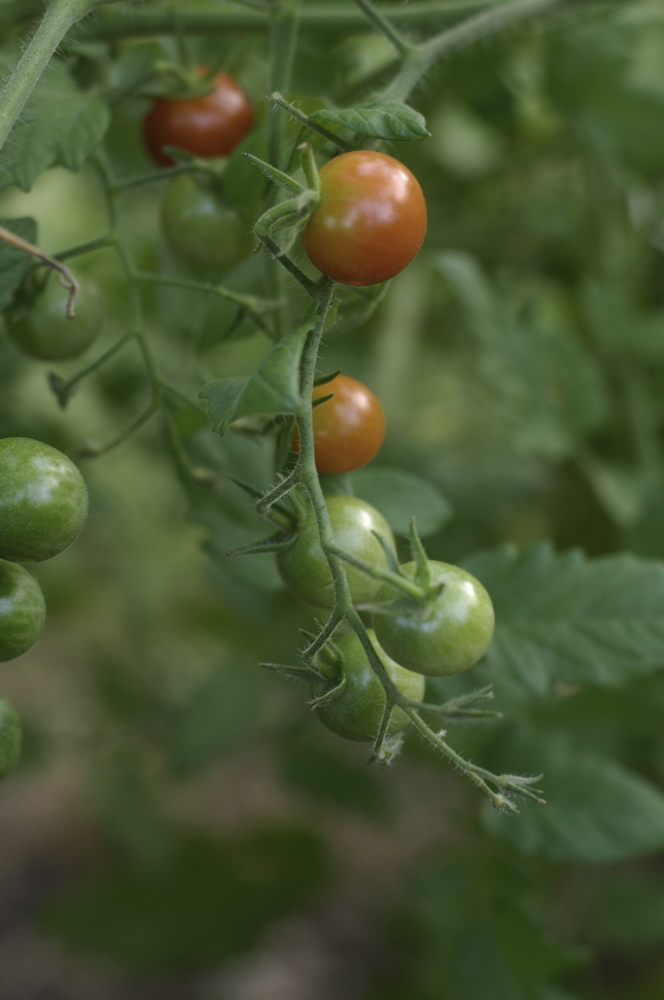
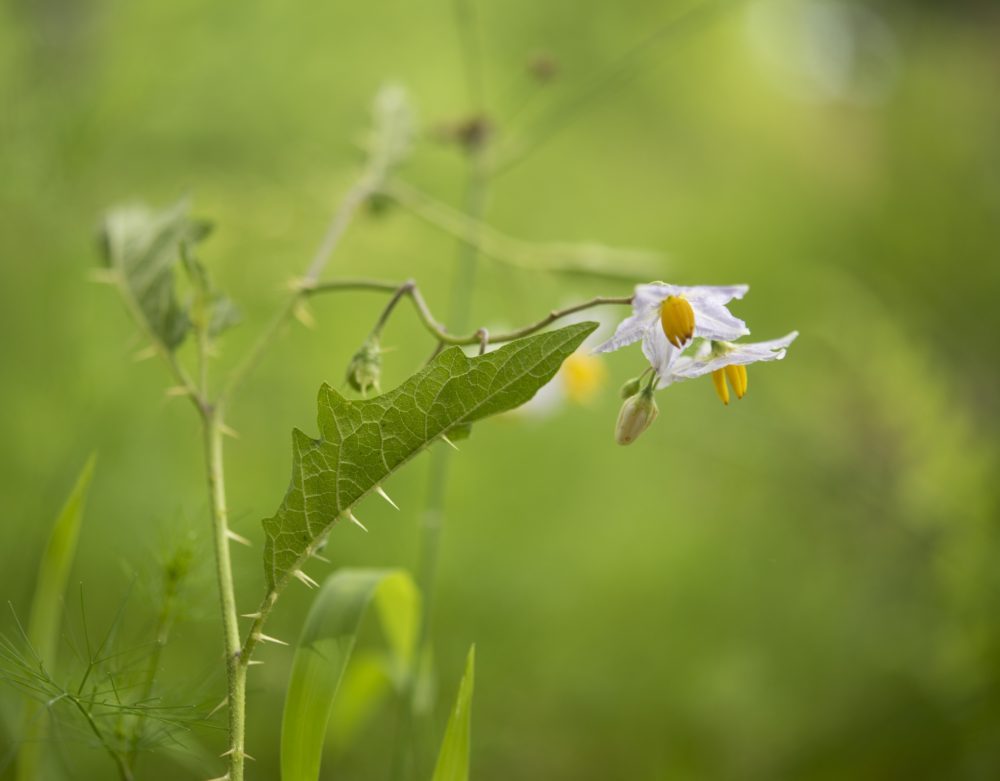
Nightshade Vegetables -Good For You, Good For the Economy
“The family Solanaceae includes many economically and nutritionally important cultivated plant species such as tomato, potato, eggplants, and chili peppers. Tomatoes are the most consumed and cultivated solanaceous plant species. Tomatoes, peppers, and eggplants are rich sources of vitamins and minerals that are vital to human health. They also contain a variety of phytochemical such as polyphenolics that are bioactive substances with numerous health benefiting biological properties including antioxidant, anti-inflammatory, anticancer, and hypolipidemic effects. Tomatoes and tomato-based products are the richest sources of lycopene, a red-colored carotenoid pigment with many health benefiting attributes such as prevention of cancers. Peppers are rich sources of vitamin C, capsaicinoids, and anthocyanins. Tomatoes, peppers, and eggplants are important part of cuisines worldwide and are consumed in a variety of ways and eaten fresh as well as in processed forms.” (“Solanaceous Fruits Including Tomato, Eggplant, and Peppers,” P. Padmanabhan, A. Cheema and G. Paliyath; Encyclopedia of Food and Health, 2016).
“The Solanaceae (nightshades) are an economically important family consisting of herbs, shrubs, or trees with about 85 genera and 2800 species. The family has worldwide distribution, including a number of important agricultural crops, medicinal plants, spices, weeds, and ornamentals. Many members of the family contain potent alkaloids, and some are highly toxic, but many cultures eat nightshades, in some cases as staple foods.” (Medicinal Spices and Vegetables from Africa; J.D.D. Tamokou, A.T. Mbaveng, V. Kuete, Academic Press, 2017.)
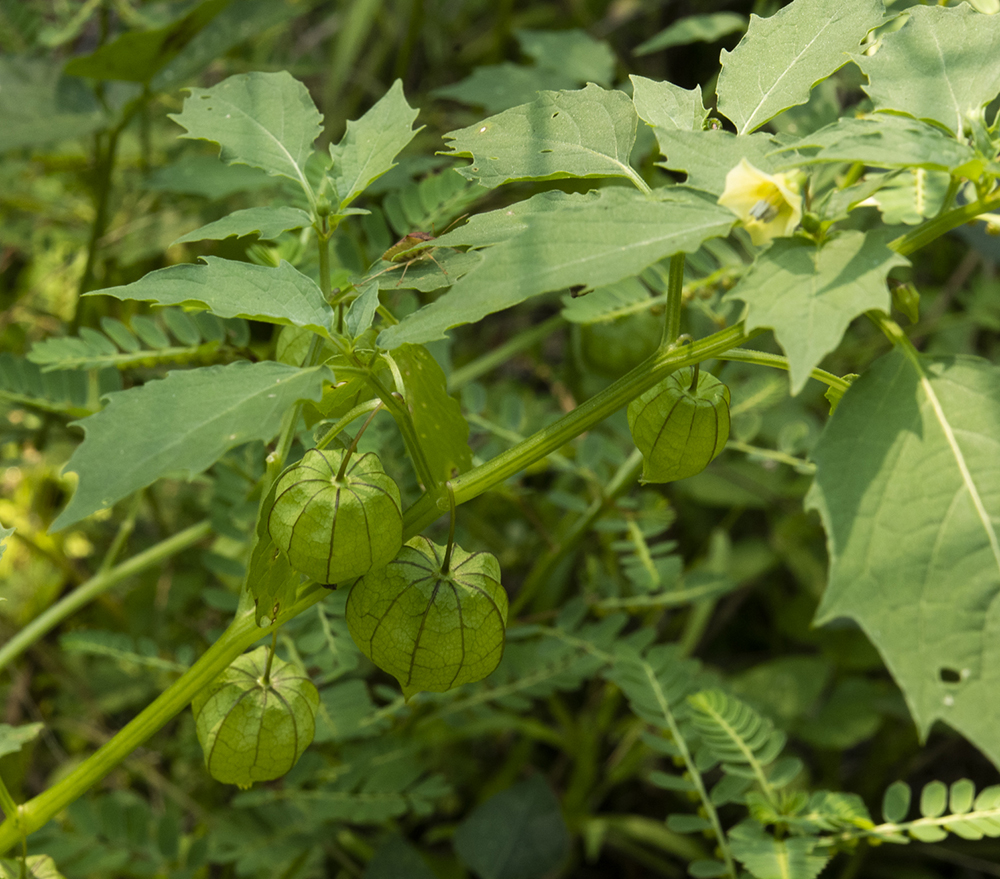
BUT, The Whole Plant Is Poisonous
Nightshades produce a glycoalkaloid poison called solanine. It is a natural defense of the plants against a variety pests including molds and insects and is contained in every part of the plant. (Toxicological Survey of African Medicinal Plants; V. Kuete, 2014.) In the U.S. the most widely consumed source of solanine is potatoes. According to Colin Crews MS MRSC Cchem, and Dr. Don Clarke in their article, “Natural Toxicants: Naturally Occurring Toxins of Plant Origin” (Encyclopedia of Food Safety, Volume 2, 2014, Pages 261-268), solanine is not removed by boiling, but it can be destroyed by frying. Solanine poisoning is uncommon as cooks and the public are aware of the problem and tend to avoid green potatoes. In any case, consumption of up to five grams of green potato per kilogram body weight per day does not appear to cause acute illness.”
Modern hybridization and agricultural science has enabled growers to produce nightshade vegetables with low concentrates of solanine in the edible part of the plant, but there remains a high concentration of it in the leaves, stems, flowers, and green/unripened fruit of tomatoes and potatoes, eggplant and all red and green peppers (black pepper is not a nightshade).
Please Hold the Solanine
The effects of solanine, or glycoalkaloid, is primarily gastrointestinal and neurological disorders such as nausea, diarrhea, vomiting, stomach cramps, burning of the throat, cardiac dysrhythmia, nightmares, headache, dizziness, itching, eczema, thyroid problems, and inflammation and pain in the joints.
“Glycoalkaloids may induce gastrointestinal (anorexia, nausea, colic, vomiting, and constipation or diarrhea) and systemic effects, with potential neurotoxicity. Symptoms may be prolonged, depending on the severity of poisoning.” M.I. San Andrés Larrea, M.D. San Andrés Larrea, and C.R. Fernández, article in Encyclopedia of Toxicology (Third Edition), 2014.
Most of the literature says that one would have to consume a very large amount of solanine to feel the effects of poisoning, but just as the size, weight, age and gender of people are considerations in the dosage of a drug, some individuals already predisposed to bowel diseases, eczema, arthritis and other autoimmune conditions might consider how much jalapeño and bell pepper to put in the jambalaya or whether those potatoes ought to be left out of the pot roast.
Confessions of a Tomato Addict
From my earliest childhood I suffered from eczema and a chronic stuffy nose (allergy to pollen I thought). In my later life there were bouts of hives that became chronic and painful arthritis. My diet consisted of red meat, fish, and nightshade vegetables, raw, cooked or processed: tomato juice, pizza, ketchup, jalapeños, eggplant sandwiches, spicy hot Cajun food I could find, even tomatoes right out the can from the pantry were my craving.
My little science project began with the discovery that a meadow plant poisonous to animals was closely related to the tomatoes and peppers I ate in quantities only an addict could appreciate. But in one last hurrah, I ate a large plate of lasagna from my favorite Italian restaurant and stopped eating all nightshades cold-turkey in 2019. Within six months all my symptoms were gone. I can make a fist and tie a fishing knot; my itchy skin is clear as well as my stuffy nose. I have not needed Tylenol or Aleve in quite a long time and the two flights of stairs I use to go and come from my raised house are no problem.
Where’s the Clinical Study?
So what we have is an economically important food source that is nutritious and delicious, but also toxic to some people in some unknown quantity! I looked everywhere without success for a clinical study on the link between nightshades and autoimmune diseases? Why? Clinical research is expensive. Studies are conducted by biotech and pharmaceutical companies in their pursuit of FDA approval for their next miracle drug, not to find out whether your irritable bowel syndrome or psoriasis can be cured by eliminating baked potatoes and marinara sauce from your diet. Just imagine the backlash if the growers and processors of peppers, tomatoes and potatoes like Heinz, Kraft, Campbells and others who sell everything from crab boil and soup to pizza sauce and Bloody Mary mix; grocery stores, farm stands, restaurants and bars were told to put a cigarette-type warning on their labels (As a matter of fact, nicotine is a nightshade). An economically important amount of money is made from products consumed by people who spend billions of dollars a year buying anti-inflammatory drugs. I’m no doctor and not even pretending to be one here. I’m not suggesting anyone give up vegetables they believe are healthy and disease-preventing. I’m saying that when I’m thinking about ordering a large pepperoni pizza with extra sauce, I ask myself whether it’s worth an elevated heart rate, itching and blowing my nose for four or five days. Still want to have some delicious nightshade vegetables?

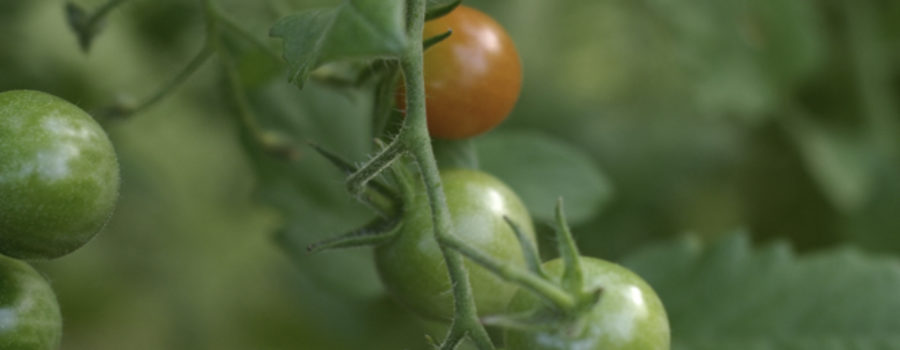
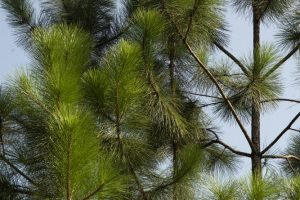
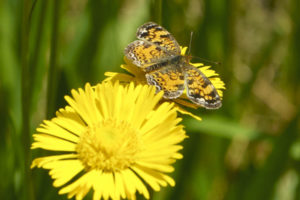
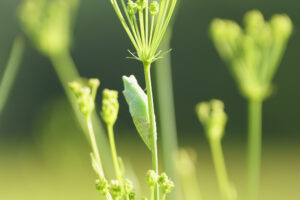
Recent Comments